Getting around, sights, eats in Timor
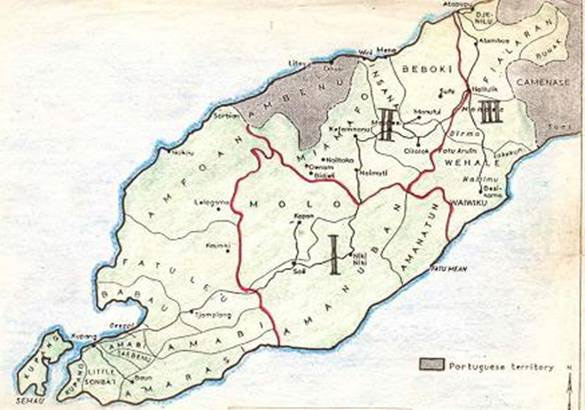
Getting around and accommodation
Recent years has seen the addition of ‘ojek’ – small cc motorcycles throughout the interior and ‘transport’ which are 7 seater [or as many bums as you can cram in] vehicles with air-conditioning which depart from Kupang and the other main towns along the trans Timor ‘highway’. A twisted spine that runs through the mountainous island.
To see the ‘real Timor’ a great trip is to make your way to the bus terminal in Walikota and head for the hills literally. It takes three hours to cover 100 kilometres of winding mountainous roads, running alongside rivers, and up gorges and through valleys, stopping for the chickens and passengers. Take a motion sickness tablet if you are prone and carry a little plastic bag in case your neighbour turns green.
When you leave the heat and hustle of Kupang and decide to head to the relative cool of the mountains do be aware that Timor does not cater to tourists in the same way as some countries do. You will pass through tropical Camplong with its large spring fed pool, and on to SoE, which is one of the politest places in the whole of Indonesia.
Kupang is also a launching point for the surfing “Mecca” of Nembrella on the neighbouring island of Roti. This can be reached from the port of Kupang by ferry (two hours) followed by a bus (five hours). Popularity has grown over the years with many Westerners building villas on the island and a small plane service now operating. Or you can go to the lovely islands of Alor by a fast ferry (six hours) or short flights from Kupang. Be aware that there are very few English-speakers outside of Kupang apart from a few students and guides.
Keep your sense of humour and a dictionary nearby and the possibilities are endless.
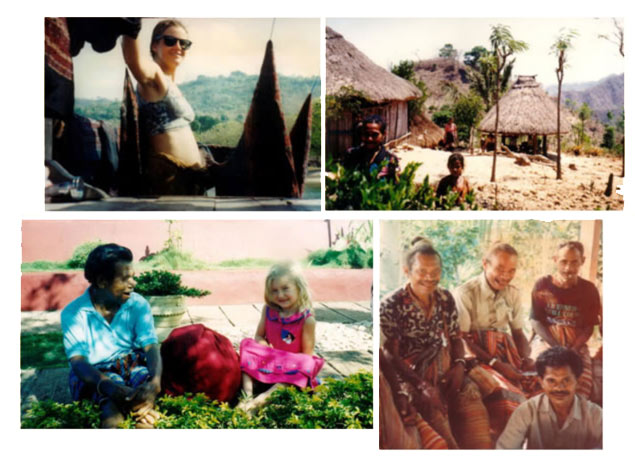
Money can be exchanged at banks in the larger towns of SoE, Kefa and Atambua. Various levels of accommodation are available in these towns (don’t expect the Hilton). Buses start at 5am and run into the night, with an 11pm finish. Most Timorese are up with the sun and have put in half a day’s work before I rub my eyeballs at 6am. Keep in mind the midday slow down siesta time when planning your forays.
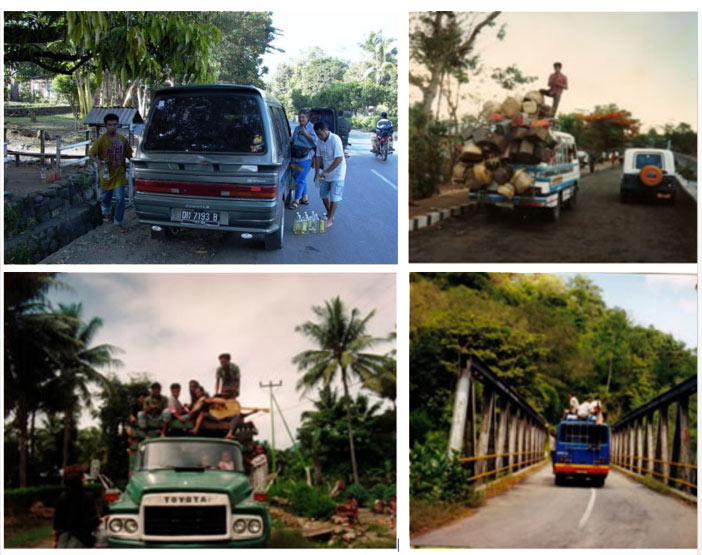
Around the SoE Area
You must make your own way to and from the ‘sights ‘ around SoE unless you can afford to hire a car in Kupang. Worthwhile trips include Oehalla waterfall, Kapan and Fatumnasi (Bonsai and bat caves on top of the world) to the north, and Kolbano and Oetune beaches to the south and Buat an Indonesian idea of a recreation park. From top to bottom; Oehalla, Fatumnasi & Bonsai forest.
Transport off the main road, in the highland towns has become easier in the last couple of years with banks loaning many young men money to purchase a motor-cycle (never more than 125cc) and they make money to pay it off by accepting fares equivalent to the local bus or bemo and it is service to your door.
You will be amazed the places the ojek riders get their motor cycles in and out of. Some of the wiser operators of ‘ojek’ carry a spare helmet, a practice which I actively encourage as do the hospitals. It is advisable to insist on it when on rough roads, that being said the riders have a vested interest in keeping you and their motor cycle intact.
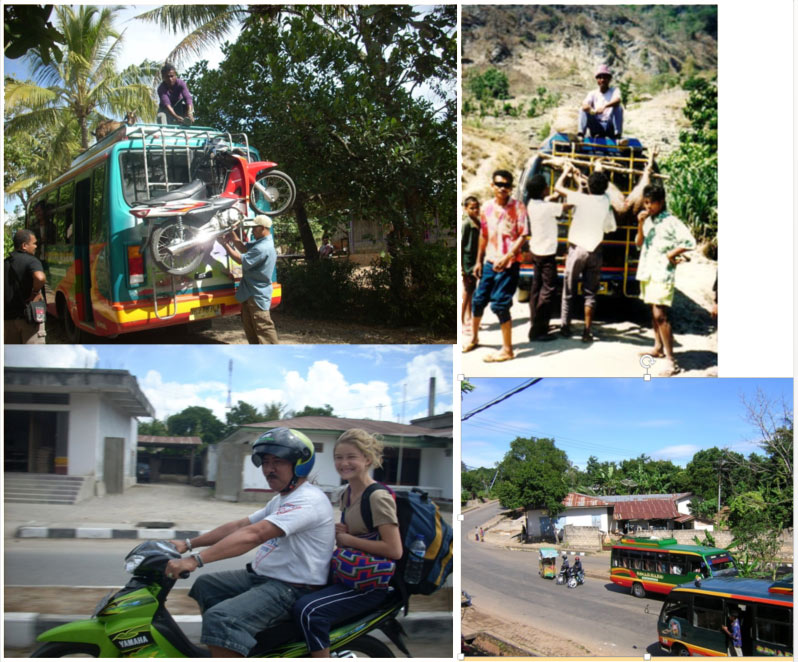
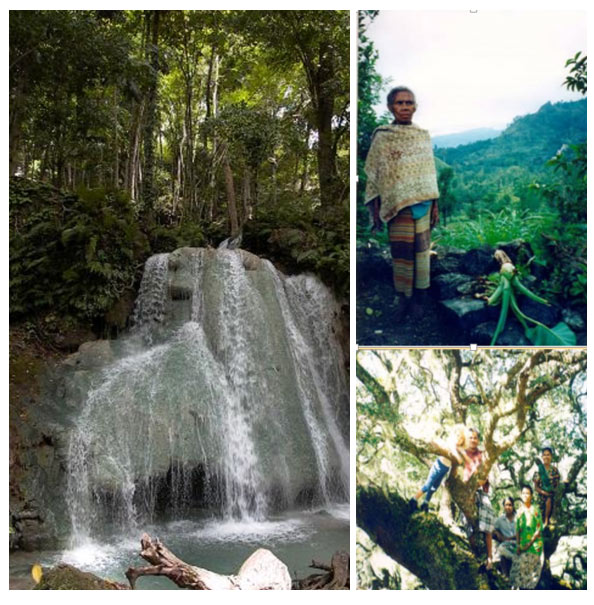
There is basic accommodation at Kolbano (Joy’s Homestay), and in Fatumnasi which is shrouded in mist most days from 3pm to 9am. Apart from those there is no accommodation out of the main towns. Nembrella in Roti and Alor are exceptions and are used to catering for Westerners.
Eating in Timor
The general rule when looking for somewhere to eat, in any country, is to watch where the locals eat. Food is limited, but as most Timorese farmers cannot afford fertilisers and such, you can be guaranteed that it is fresh and usually organic. In more recent years the fare on offer has expanded somewhat and you may be fortunate to find fruit smoothies and most major towns will treat you to a spread of Padang.
It is best to drink only boiled or bottled water. Your hotel will refill your bottle if you don’t want to keep buying plastic bottles. You can give your empty bottles to the kids, maybe they will drink more if they can carry it around with them.
Unless you have reasonable Indonesian speaking skills or a dictionary and are willing to learn, ordering food is best done using a lot of good humour and charades. Usually the fare of the day is on display. Rice is the staple here and will be heaped upon your plate, often wetted down with clear broth, with the merest accompaniment of meat and veg usually referred to as Nasi Campur.
You may be fortunate and be invited to join in a festive occasion at which some of the best food I have seen and tasted in Timor is offered.
Food is seasonal, with fresh fruit and vegetables available at all local markets. The village people tend to eat very frugally, and in the “hungry” season September to November [while people are preparing the gardens and planting corn then waiting for the oncoming rains] there is often only UBI (cassava) and a little rice available, dry noodle packs sometimes appear to liven up the fare
The economy outside of the major towns is such that refrigerators and shops are a rarity. So if you are heading off the main road it is a good idea to stock up on basic supplies such as tea, coffee, sugar, noodles and biscuits before you go. Timorese people are very hospitable (if you can communicate) but an invitation into their homes may often cause embarrassment or hardship as the family does its best to cater to you.
[Tip: paw paw flowers contain quinine and when cooked properly are a very tasty anti-malarial.) The ever-present Asian bowl of chillies will allow you to spice up your food.]
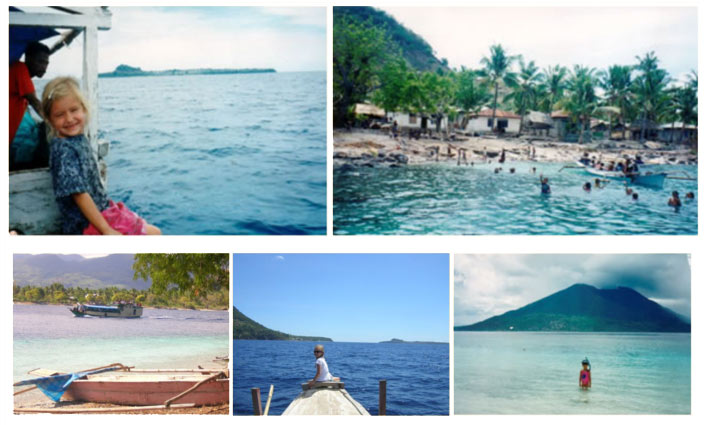
Markets in Timor
The larger regional markets provide a meeting place for locals and prove to be a bright and lively affair with lots of homemade cakes and ice blocks, and are good places to see the traditional ikat textiles of Timor still in daily use. Markets start early and are over by midday.
Goods available at the markets range from clothing, new and second hand, shoes, tools, medicines, the insidious skeins of factory thread, dried and fresh fish, tobacco, all manner of dried and plastic goods, vegetables and fruit, the odd snake oil salesman and the ever-present betel nut.
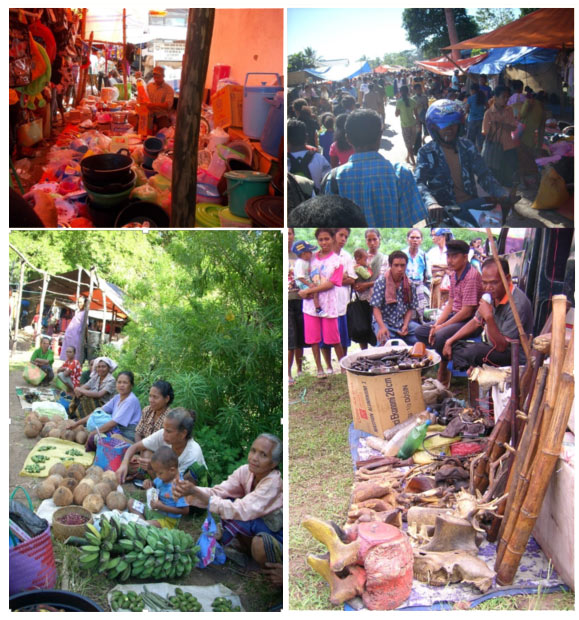
With patience and politeness your stay in Timor may be enriched in any number of ways. One of the most important things to remember is dress .
With patience and politeness your stay in Timor may be enriched in any number of ways. One of the most important things to remember is dress the Timorese are unused to and indeed alarmed by seas of white flesh [having taken on Christianity in 1960 when Pak Suharto decreed the nation should join the “civilised” world by taking on a religion]. It is best to dress by covering the shoulders and not wearing short skirts or dresses. Do report anyone being rude or offensive this is a tightly knit society outside of Kupang and usually the community will deal with their own.
Most of all, remember you are the visitor in a new land. Be humble but firm and all sorts of special things may occur.
